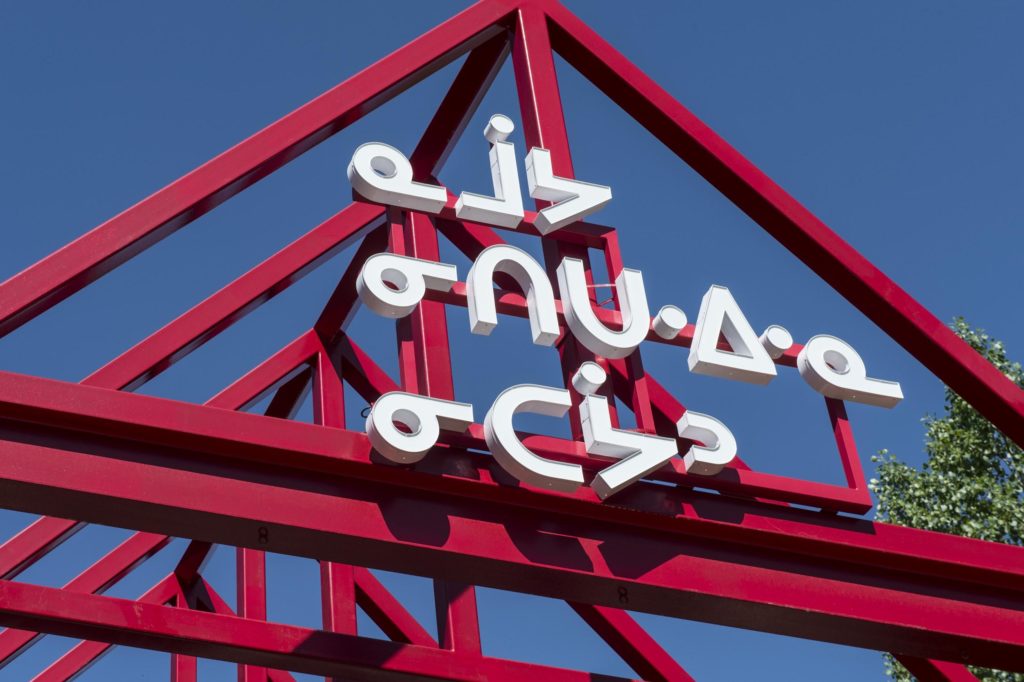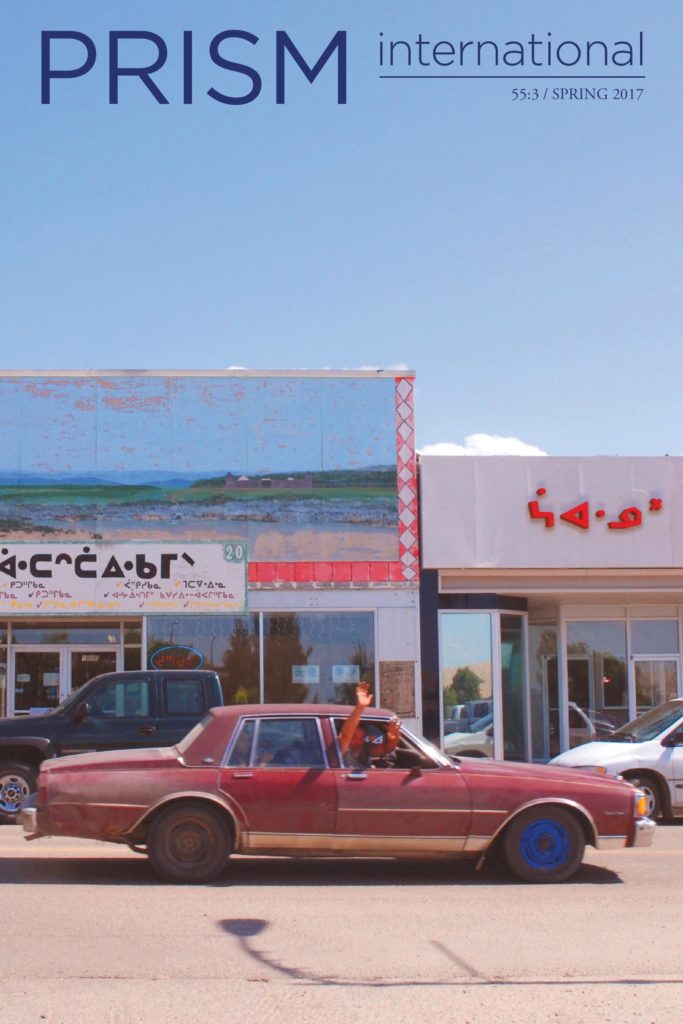
Interview by Michelle Cyca. Photo by Red Works: Nadya Kwandibens
Joi T Arcand is a multidisciplinary artist from Saskatchewan, currently living in Ottawa. A nehiyaw iskwew from the Muskeg Lake Cree Nation, Joi’s body of work includes representations of the Cree language in photography and other mediums, and she has been exhibited across Canada, including at Vancouver’s grunt gallery. She co-created kimiwan, a quarterly publication for and by Indigenous visual artists and writers that published eight issues between 2012 and 2014. Her piece Northern Pawn, Southern Vietnam appeared on the Spring 2017 cover of PRISM international.
What was it like to grow up on Muskeg Lake?
Growing up on Muskeg Lake is something that I am very grateful for. My dad is from Muskeg Lake and my mother is from the neighbouring farming community near Marcelin, Saskatchewan. After they got married, they raised my sister and I on the reserve. I was fortunate to have my kokum next door to me and my grandparents down the road. I also had numerous aunties and uncles and relations that were a part of my upbringing and community knowledge that I’m sure I took for granted as a youth.
At times it was isolating, but not isolating in any way that we weren’t able to find a way around. Saskatoon is only 100kms away, so as soon as my older sister got her licence, we were going to “the city” to escape the boredom of rural life.
When did you first pick up a camera? When did you begin to identify a path for yourself as a photographer and artist?
I became interested in photography as an art form when I was in my first year at the University of Saskatchewan and enrolled in Photography class. I got a BFA with a major in photography, and dabbled in some commercial work, but have never identified myself as a photographer, rather a photo-based artist, and now an interdisciplinary artist.
Is there a reason you never pursued commercial photography? Also, as a non-artist, I’m curious about the distinction between photographer and photo-based artist.
I make a distinction between photographer and photo-based artist, based on who you are making the photographs for. Commercial photography is client-based, and I am not interested in that type of work. In calling myself a photo-based artist, I believe it centers the work as my art practice and to me that is the difference.
Tell me about the photo from the Here on Future Earth series that appears on the cover of PRISM.
The photo on the cover of PRISM is from a series I shot in 2009 around Cree territories in Saskatchewan where I changed all of the English signage to Cree using Photoshop. Northern Pawn, South Vietnam was shot in North Battleford in the middle of summer, the car drove by just as I was closing the shutter. The guys in the car gave me a big wave, and I knew I had the shot. The words on the signs were all translated by Darryl Chamakese from Chitek Lake, who has since been a long-time collaborator for my Cree translations.
What are you working on now?
I have since moved away from photography, but remain interested in Cree language revitalization. I have been taking the concepts from Here On Future Earth and creating physical signs in neon and LED in the language.
Creating signs in Cree sounds amazing! What’s the process of working in neon & LED? Are they displayed anywhere?
The signs are outsourced to folks that know how to make them! Walter Phillips Gallery in Banff recently commissioned an LED piece for their outdoor space, where it will be exhibited for a year. I have two other neon pieces on their way to an exhibition in Toronto.
I read on tea&bannock that you’re learning Cree. Has that begun to inform your practice or inspire new ideas?
I have been learning Cree my whole life. I have been fortunate to have had Cree language classes offered throughout kindergarten and elementary school, taught by Gladys Wapass-Greyeyes. However, I am still not fluent. My kokum is a fluent speaker, and through her and other family members who speak the language, I have had access to the sounds and nuances of the language all my life.
As an adult, I make a point to take classes and do my best to surround myself with the language, when the opportunities arise. I’ve also been fortunate to work for the Saskatchewan Indigenous Cultural Centre in the publishing department, which is where I learned about the Cree syllabic writing system.
Saskatchewan seems like it has a really rich Indigenous arts scene and you’ve created and collaborated on so much incredible work in the prairies. How does it compare to Ottawa? And how does living a new city impact or inspire the work you’re making?
Saskatchewan is my home and where I draw all of my inspiration from. It is where my family still lives and I find that I need to visit as much as possible.
Ottawa also has a strong arts community that I’m happy to be involved in, and I will be curating my first exhibition there this fall at Gallery 101, called Language of Puncture, opening September 30, 2017. It is a group show of seven Indigenous artists working with language and text-based art.
I loved kimiwan, your zine for Indigenous artists. Would you ever want to make a publication like that again?
I love publishing and I love what kimiwan accomplished in a short time. While I’m not sure I would resurrect kimiwan, I would love to re-release the issues into a book format, so that the work would remain available to those that are interested.
I also love this pin that you made. What’s the story behind it?
When I was shooting the source images for Here On Future Earth, I took some photos of the Capri sign which used to be on top of the building which now houses the Lighthouse Supported Living shelter in Saskatoon. I had intended on using it in the series and translating the sign into Cree, but never ended up using it until recently. Instead of doing a new photo in the series, I decided to make a pin out of it. The sign was taken down in 2011, so it’s a very niche market.
Enamel pins are having a real moment. What else are you making?
I am making jewellery as well.
Who are other Indigenous visual artists who you’d like to see on the cover of PRISM?
Whess Harman, Richelle Bear Hat, Melissa General, anyone on tea&bannock, there’s so many!
Thank you Joi! See more of Joi’s work on her website.
